All about the groomer profession
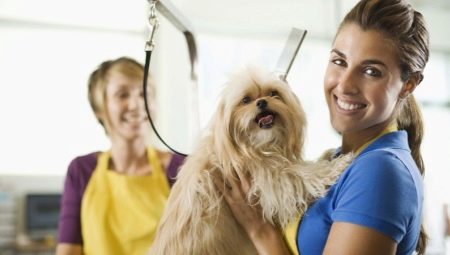
Groomer services are in high demand among pet owners. This is due to the fact that most decorative breeds need regular haircuts, brushing teeth, grooming hair and nails. In this regard, interest in the groomer profession is steadily growing. Many people would like to master this challenging yet interesting and creative craft.
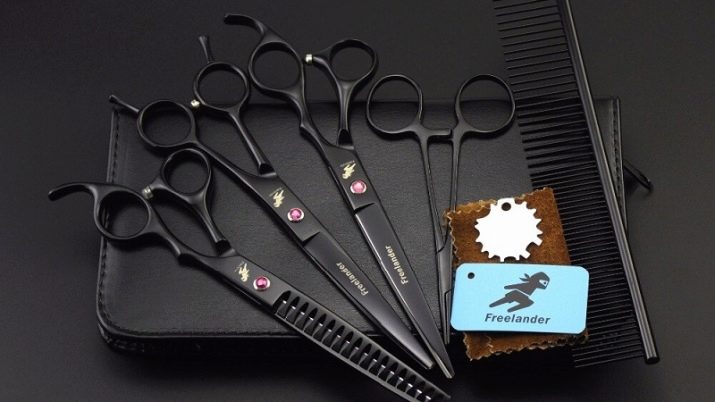
What is this profession?
The term “groomer” is derived from the word “grooming”, which denotes actions aimed at cleansing the fur of an animal's body by bathing or washing. In the modern world, a groomer is called a person caring for the fur and skin of an animal. Skillful work of such a specialist is especially important when preparing a pet for exhibitions, as well as when caring for problem hair that requires regular and painstaking combing or trimming.
The formation of the groomer profession took place in Britain, where the keeping of poodles, a breed requiring regular haircuts, became fashionable. This contributed to the active discovery of dog barbers and the growth of the number of specialists. Later, owners of other breeds began to apply for hygienic procedures for their pets, and after some time, the owners of cats.
Today, you can use the services of a groomer in a beauty salon or visit a specialist at home. At the request of the client, the employees of the salons themselves go to him, however, due to the large dimensions of the professional equipment (table, holding devices), this can be difficult to do.In addition, grooming an animal requires a special room and compliance with special sanitary standards, which is quite problematic to ensure in an ordinary living room.
In this regard, the service of delivering a pet to the salon and back by the transport of companies has become widespread, when specialists come for the animal, take it for hygiene procedures and return it at the agreed time.
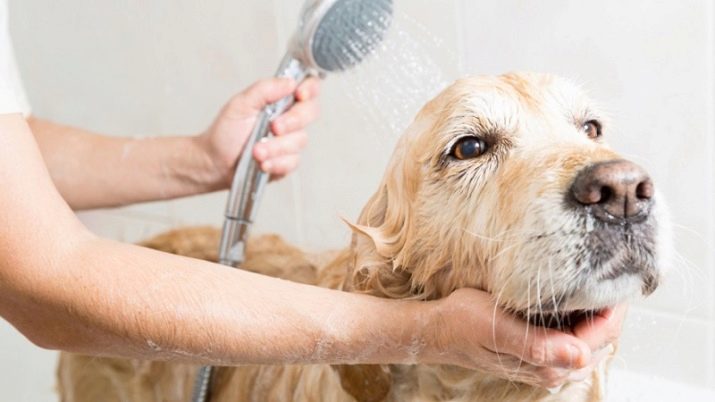
Varieties of grooming
Some professional groomers know how to handle all types of animals and are able to perform all procedures on their own. However, it is not often possible to meet a wide-profile specialist, and most of the masters specialize in one type of service.
Today there are several types of grooming, each of which requires special skills and pursues specific goals.
- Classic grooming is called a hygienic grooming of an animal with the removal of hair around the eyes, ears and paws.
- Stripping is called removing hair with a sharp knife, while preserving the general structure of the coat and plucking out old hair.
- Rolling is one of the types of stripping and is a regular artificial molt of an animal.
- Flatfercom called a machine haircut of a pet with the formation of sections of wool of different lengths.
- Clipperwork called a uniform short machine haircut for cats and dogs.
- Trimming is a popular hygienic procedure and consists in plucking wool in order to thin it out.
- Creative call a number of activities for dyeing wool, weaving braids, tying bows and other similar procedures.
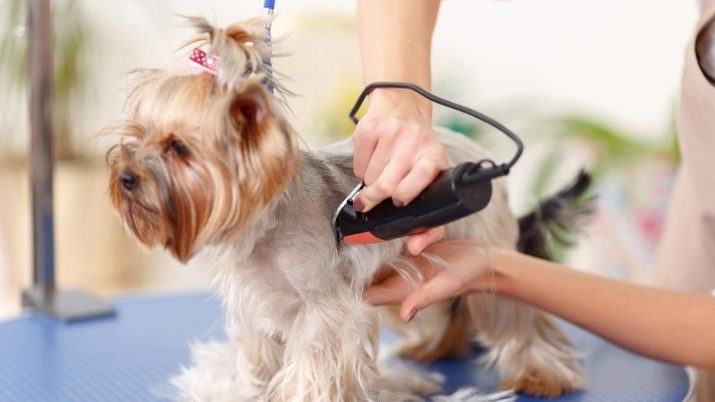
Pros and cons of the specialty
The growing interest in the groomer profession is due to a number of indisputable advantages of this difficult, but an interesting craft.
- Regular communication with pets gives a powerful charge of positive energy, which has the most positive effect on the mental health of a person.
- Opportunity to develop your own business with a minimum start-up capital, no need to rent a production facility and a quick payback of the equipment purchased for work, makes the groomer profession very popular among youth.
- With a responsible attitude to work and a desire to comprehend new techniques and methods, experience accumulates quickly enough, which allows the master to acquire a permanent clientele and be confident in the future.
- A serious business approach and attention to each client guarantee a good income. Even at the beginning of their career, specialists without experience are able to earn up to 20,000 rubles a month.
- Most groomers work as individual entrepreneurs and accept clients at home... This allows them to set flexible hours and work part-time.
- Professional craftsmen often become heads of grooming courses, receiving additional income to the main income.

However, along with a lot of obvious advantages, the profession still has disadvantages... So, contrary to the popular belief that the work of a dog and cat hairdresser is simple and not tiring, the groomer profession is very difficult and in terms of injury risk it stands right after such professions as a police officer and a rescue service employee. The foreman spends most of his working day in the company of animals, often unaware of the rules of behavior and struggling to protest against cutting or washing.
In addition, many owners do not bother themselves with even minimal grooming of their pet's coat between visits to the hairdresser, not to mention its claws, teeth and eyes. Often, even the owners of exhibition animals, who bring their wards on the eve of performances with dirty and tangled wool, are guilty of this.
Another problem that groomers face is diseases of their four-legged clients with various infections, many of which are easily transmitted to humans and require long-term treatment. So, groomers more often than others suffer from trichophytosis and helminthiasis, pick up skin diseases and are attacked by fleas. After a flea client, the groomer is forced to carry out a general disinfection of the premises using rather aggressive means, which also does not add health to the specialist.
An equally significant disadvantage of the profession is the need to be on their feet most of the time, which is why it is impossible for persons suffering from varicose veins and arthritis to professionally groom.

The back also receives a great load. The master has to spend hours in unnatural positions in order to cut hard-to-reach places on the animal's body, as well as bathe it in the bathtub, staying in an uncomfortable position for some time. Here you can add bloody calluses from scissors that occur when working with an overgrown animal, when you have to wrestle literally every hair from the mats.
The work is categorically not suitable for allergy sufferers, since during a haircut, the air in the room is filled with puffs of wool, which can cause an asthma attack or other manifestations of an allergic nature. However, many masters call the most significant disadvantage of the profession inappropriate behavior of some owners... There are frequent cases of dissatisfaction with a pet's haircut, even if it was brought in an absolutely neglected state, and the groomer was forced to literally unravel the fur from a continuous tangle for several hours in a row.
There are frequent cases of refusal to pay for a service, and sometimes even to take the dog home. Not a very pleasant moment is the likelihood of accidental injury to the animal during the procedures. In this regard, the master should always have a first-aid kit on hand and be ready to stop the bleeding, treat the wound and talk to the owners of the animal.

Responsibilities
A professional groomer does more than just trim animals. The master must be able to trim wool and comb out mats, brush teeth and trim claws, cut excess hair between the pads of the paws and dye the claws and fur of the animal at the request of the owner. In addition, the groomer's duties include bathing the pet, taking care of the eyes and ears, as well as trimming, braiding, and styling the coat.
However, the latest trends in dog and cat fashion are placing greater demands on groomers. So, today, wrapping procedures, ozone therapy, massage, aromatherapy and rubbing in creams are very popular. No less in demand tattooing and coloring the animal's fur in different colors.
As for the technical side of the issue, the groomer must be well versed in the types of wool and know which tool is suitable for a particular type. He must also keep the equipment clean, regularly disinfect scissors, combs and other devices, know the dilution proportions of chemicals and monitor the impeccable cleanliness and sterility of the room. To do this, the groomer must equip his office in accordance with sanitary standards, arrange for good ventilation and remove any soft objects from the room.
Disinfection of the table, cleaning of floors, window sills and other hard surfaces should be carried out after each client. In addition, the groomer must register as a sole proprietor or self-employed person.
You will have to purchase an online cash register and be ready to provide customers with the necessary reporting documentation: a check, a service agreement and an act of work performed.
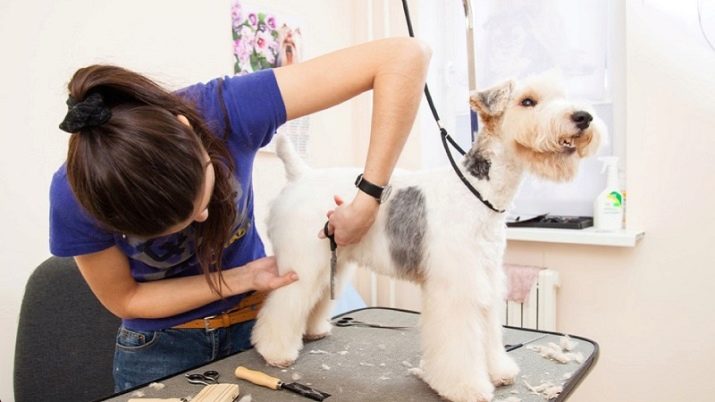
Required qualities and skills
Despite its popularity and demand, the groomer profession is not suitable for everyone.Therefore, before deciding on the choice of a specialty, you should find out what qualities and skills a professional groomer should have, and really assess your abilities.
Personal
The most important and indispensable quality of a future groomer is love for animals. Pets are very keenly aware of the absence of this state of mind, and therefore are reluctant to make contact with such a person. In addition to love, the master must know well the zoopsychology and behavioral characteristics of each breed. This will help avoid misunderstandings when working with four-legged clients and eliminate injuries.
Besides, the groomer should be patient, resilient, positive and outgoing. The latter quality is especially important, since any animal has an owner, and the continuation of further cooperation will depend on personal relationships with him. Also groomer must be neat and pedantic, have a good eye, have excellent taste and have a sense of proportion.
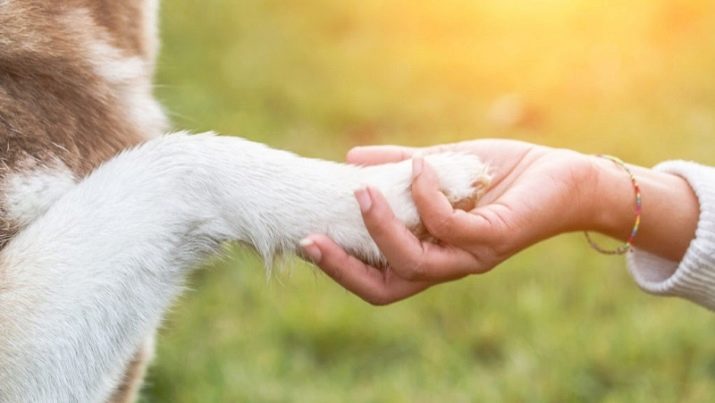
Professional
A good specialist must constantly improve his skills, attend exhibitions and seminars, closely monitor fashion trends, as well as monitor changes in technology, the appearance of new tools and products for skin and wool care on the market. An important professional quality, oddly enough, is some composure and the ability to do their job well in any conditions.
This is due to the fact that groomers are often invited for the final preparation of the animal just before the exhibition, when the master has to do his job literally in the field and with the constantly distracted and spinning animal. Experienced groomer must have some knowledge of veterinary medicine, in order to indicate to the owners in time on certain deviations in the pet's health, especially in terms of skin, eye and ear diseases, the onset of which, due to lack of experience, may not be noticed by the owners.
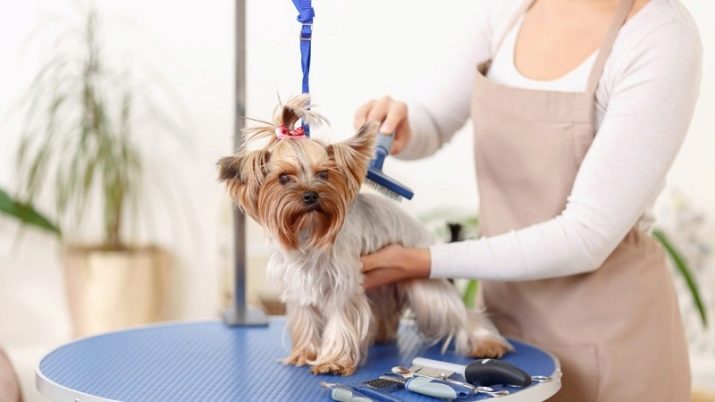
Where to study?
The first specialized education in the specialty of groomer does not exist at the moment, and numerous training centers are engaged in the preparation of specialists in this profile. Initial skills can be obtained by getting a job as an apprentice, as well as attending master classes of professional groomers. Further growth depends on the desire and ability of the student and involves the passage of specialized courses and the receipt of an appropriate document on additional education.
This point is especially important for those who plan to get a job in the salon, since in the absence of a diploma, you can get a refusal. The best option would be to obtain a veterinary education with subsequent groomer specialization in a training center. Such masters are especially highly valued and do not experience problems with employment. Cynological education is also encouraged and makes it much easier to master the groomer profession.
The duration of the course varies depending on the specialization and is 95-100 academic hours. After completing the training, the student receives the qualification of a universal hairdresser and can start independent activities. There are also shorter courses, more like trainings, the duration of which does not exceed 50 hours. Graduates of express courses receive a narrower specialization, for example, a hairdresser for dogs.
The cost of the courses depends on their duration and level of training, and is 18-25 thousand rubles. Thus, training costs can be reimbursed after a month of work.
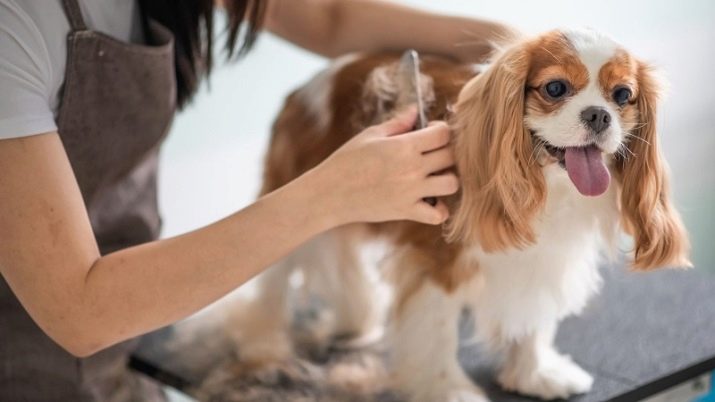
How much does he earn?
The groomer's salary depends on work experience, reputation, the size of the settlement, the list of services and the place of business. For example, a specialist who works at home, lives in a metropolis and has a permanent client base, is able to earn over 60,000 rubles a month.The salary of a novice master in the salon will be about 15-20 thousand rubles. Home craftsmen living in small towns and providing a diverse range of services receive about 30-35 thousand rubles a month, and rural specialists - 18-20 thousand.
However, it should be noted that these figures are quite subjective and cannot be considered as final wages. The groomer's income depends on many external factors, such as seasonality, frequency of exhibitions and the population's ability to pay.
As you can see, working as a groomer is not only interesting, but also profitable, which is why more and more people are paying attention to this profession.

How to get started?
As you can see, becoming a groomer is not very difficult, numerous courses and trainings will certainly help in this, it is much more difficult in a highly competitive environment to start your own business from scratch and become a good specialist. Most experienced masters recommend starting your career in the hairdressing field in budget beauty salons.... Clients in such establishments are not too picky and often bring pets for hygienic haircuts and ear cleaning, rather than for preparation for exhibitions.
The absence of nervousness and the calm nature of the work make it possible to fill your hand and gain invaluable experience, after which you can try your hand at a more prestigious salon or as a home-based craftsman... During his work in the salon, a novice groomer masters various techniques for performing cosmetic procedures, studies the peculiarities of working with a tool and tries, if possible, to develop a minimum client base so that at the first stage of independent activity he does not experience significant financial difficulties.
If a decision is made to work independently, the groomer must register with the tax authorities and familiarize himself with the documentation procedure. Then you should purchase the necessary equipment and tools, prepare the premises, place an ad under the heading "Services" and wait for the call, and then the visit of your first shaggy clients.









